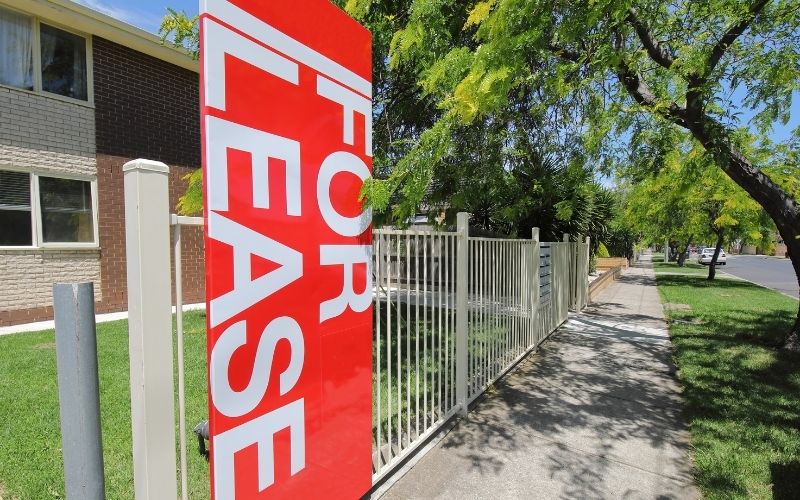It has been an interesting week for property research. Banking giant Westpac estimates national house prices will only fall by a further 2.3 per cent by the end of the financial year before rebounding by 15 per cent over the following two years.
The bank had previously predicted a 10 per cent plunge in prices nationally from the pandemic peak this April through to June next year.
Westpac’s experts say interest rates will stay low for a long time and the recession won’t be as deep as previously thought.
SQM Research also has revealed the national residential rental vacancy rate recorded a decrease from 2.1 per cent in July to 2 per cent in August.
All capital cities recorded declines in vacancy rates over the month except for, naturally.
Sydney currently still has the highest vacancy rate in the nation of 3.5 per cent, having declined by 0.1 per cent from July. Hobart’s vacancy rate is the lowest in the nation at 0.7 per cent, with Canberra and Adelaide also recording low vacancy rates of 0.8 per cent and 0.9 per cent respectively.
| City | August 2019 Vacancies | August 2019 Vacancy Rate |
July 2020 Vacancies |
July 2020 Vacancy Rate |
August 2020 Vacancies |
August 2020 Vacancy Rate |
| Sydney | 24,465 | 3.4% | 26,506 | 3.6% | 25,828 | 3.5% |
| Melbourne | 11,830 | 2.0% | 18,746 | 3.1% | 20,891 | 3.4% |
| Brisbane | 8,283 | 2.5% | 7,593 | 2.2% | 7,154 | 2.1% |
| Perth | 6,004 | 2.9% | 2,803 | 1.3% | 2,294 | 1.1% |
| Adelaide | 1,857 | 1.0% | 1,809 | 0.9% | 1,699 | 0.9% |
| Canberra | 781 | 1.2% | 653 | 1.0% | 569 | 0.8% |
| Darwin | 926 | 2.9% | 453 | 1.4% | 349 | 1.1% |
| Hobart | 170 | 0.6% | 212 | 0.7% | 205 | 0.7% |
| National | 75,741 | 2.2% | 71,760 | 2.1% | 69,971 | 2.0% |
SQM’s calculations of vacancies are based on online rental listings that have been advertised for three weeks or more compared to the total number of established rental properties. SQM considers this to be a superior methodology compared to using a potentially incomplete sample of agency surveys or merely relying on raw online listings advertised. Please go to our Methodology page for more information on how SQM’s vacancies are compiled.
Sydney CBD vacancies dropped to 12.9 per cent, down from its all-time high of 16.2 per cent in May. Brisbane CBD’s vacancy rate decreased to 11.4 per cent down from its high of 14 per cent in June.
However Melbourne’s CBD has increased to a new all-time high of 10 per cent, Adelaide CBD has also increased 8.4 per cent and Perth CBD remained stable over the month at 5.5 per cent.
Most regional locations recorded falls in rental vacancy rates, highlighting the ongoing shift away from inner suburban living into areas offering more room and distancing for occupiers… and future work from homers. Sydney’s Blue Mountains fell to a record low rental vacancy rate of just 0.7 per cent, as did Victoria’s Mornington Peninsula.
Aussies love a home loan “cocktail”
Aussies want the best of both worlds when it comes to their home loan interest rate, according to new research by Finder, Australia’s most visited comparison site.
Finder recently surveyed 1,000 Australians and the data revealed that 1 in 5 (20 per cent) would opt for a split mortgage dividing their loan into fixed and variable portions.
Around 19 per cent would refinance to a variable loan, while 17 per cent would prefer to lock in their rate for a set period of time with a fixed-rate mortgage. The remaining 43 per cent said they were unsure if they’d opt for fixed or variable.
The research found that it’s the younger generations who place the most value on flexibility when it comes to their loan.
Over a quarter of Gen Z (27 per cent) would split their mortgage – more so than any other generation – while Millennials are the most likely to choose a variable loan (23 per cent).
Baby Boomers were more likely to refinance to a fixed rate (19 per cent).




























Trending
Sorry. No data so far.